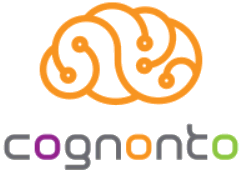 New Technique of Reciprocal Mapping Adds 40% to Scope
New Technique of Reciprocal Mapping Adds 40% to Scope
We are pleased to announce that KBpedia, the large-scale dedicated knowledge graph for knowledge-based artificial intelligence (or KBAI), was released in a greatly expanded version today. The new KBpedia v.1.40 was expanded by 40% to now 54,000 concepts via a new method called reciprocal mapping that I covered in an article last week.
Knowledge graphs, technically known as ontologies, are normally expanded by mapping external knowledge systems to concepts that already reside in the target graph. This poses problems when the new source has different structure or much greater detail than the target graph has on its own. I likened this in my article last week to the “Swiss cheese problem” of gaps in coverage when aligning or combining knowledge graphs.
Reciprocal mapping is a new artificial intelligence method for identifying detailed structure in source knowledge bases, and then in identifying the proper placement points for that new structure within the target knowledge graph. These candidate placements are then tested against a series of logic and consistency tests to ensure the placements and the scope of the added structure in the now-expanded knowledge graph remain coherent. Candidates that pass these tests are then manually vetted for final acceptance before committing to a new build.
This reciprocal mapping method was applied to the source of “clean” Wikipedia categories against the KBpedia target. After all logic and consistency tests, KBpedia was expanded by nearly 15,000 new categories. The same process was used to also add missing definitions and new synonyms to KBpedia.
Frédérick Giasson, Cognonto’s CTO, developed some new graph embedding techniques coupled with machine learning to automate the generation of candidates for this reciprocal mapping process. This two-step process of standard mappings followed by reciprocal mappings can be applied to any external knowledge base. The technique means we can achieve the ‘highest common denominator’ capturing the full structure of source and target knowledge bases when mapping. Reciprocal mapping overcomes prior gaps when integrating enterprise knowledge into computable knowledge bases.
The new version 1.40 of the online KBpedia may be browsed, searched and inspected on the Cognonto Web site. The site also provides further documentation on how to browse the graph and how to search it.
Knowledge graphs are under constant change and need to be extended with specific domain information for particular enterprise purposes. The combinatorial aspects of adding new external schema or concepts to an existing store of concepts can be extensive. KBpedia, with its already tested and logical knowledge structure, is a computable foundation for guiding and testing new mappings. Such expanded versions may be tailored for any domain and enterprise need.
The KBpedia knowledge structure combines six (6) public knowledge bases — Wikipedia, Wikidata, OpenCyc, GeoNames, DBpedia and UMBEL — into an integrated whole. These core KBs are supplemented with mappings to more than a score of additional leading vocabularies. The entire KBpedia structure is computable, meaning it can be reasoned over and logically sliced-and-diced to produce training sets and reference standards for machine learning and artificial intelligence. KBpedia greatly reduces the time and effort traditionally required for data preparation and tuning common to AI tasks. KBpedia was first released in October 2016, though it has been under active development for more than six years.





